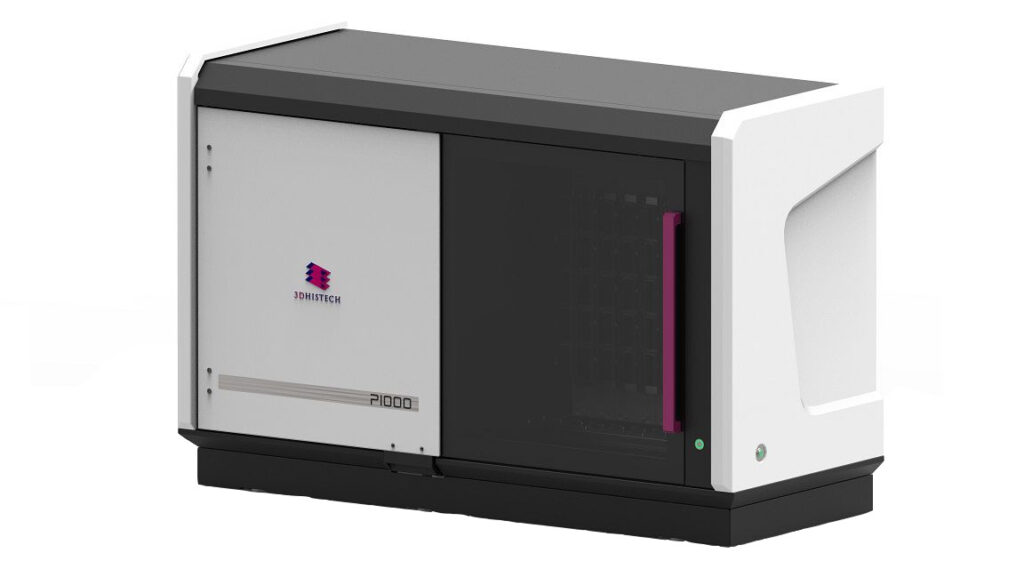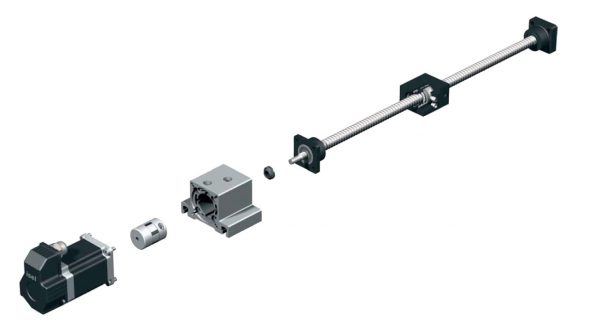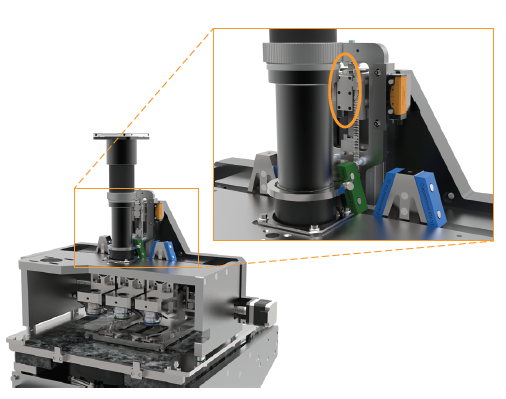Precision and speed in lens focusing
3DHISTECH pushes the limits within digital imaging
Combining high precision and speed in a lens focusing mechanism
3DHISTECH produces digital slide scanners and offers software to analyze tissue samples. The target market is pathology, with focus on routine pathology, research, and education. Dr Béla Molnár at Semmelweis University (Budapest, Hungary) thought to combine traditional microscopy with digital imaging and founded the company 3DHISTECH in 1996.

In digital pathology, you use hardware that scans samples through an X, Y, and Z movement. Thereafter, a software analyzes and creates digital images of what has been measured. The higher the resolution of the scan, the better the output from the analysis. Moving the hardware in the X and Y directions is usually not a problem in terms of precision and can be made with traditional drive technology, in this case stepper motors and linear ball screws. The Z-axis, however, moves the objective that focuses on the samples. It must have a resolution below 200 nm. The faster the camera can focus, the more samples can be analyzed. To justify investing in a scanner, many customers demand a capacity of 300 samples per day. In the long run, highcapacity scanners can increase the number of samples processed in e.g. hospital test laboratories. This will enable physicians to perform more tests, analyze them better, and give shorter lead times from test to feedback to patients. 3DHISTECH was limited by the speed of the camera at the Z-axis.
In need of a system with no tradeoff between precision and speed

Historically, scanners from 3DHISTECH have been equipped with traditional stepper motors for the lens focusing mechanism (Z-axis). To increase the resolution with a stepper motor, 3DHISTECH has added mechanical components, which in turn add increased inertia and backlash to the system. This influenced the step and settling times, in contrast to the need to scan more samples. To cope with the higher demands, the Z-axis had to react faster.
A piezo motor-based system on the other hand has a true direct drive. The drive rod in the motor is in direct contact with both the object to be moved and with the piezo elements in the motor. This has the important advantage of giving no backlash, a short response time, and a resolution that by far exceeds the demands of the application. The objective at the Z-axis can be focused much faster and more accurately at shorter cycle times, which leads to faster scanning time and more processed samples.

The partnership between 3DHISTECH and PiezoMotor solved the problem

The greatest advantage of piezo-based systems is the combination of high precision and short response time without increasing the cost of the system. With other solutions, using different technology, there is a trade-off. In addition to this, PiezoMotor could offer a unique range of force and stroke. The partnership between 3DHISTECH and PiezoMotor solved the problem
The PiezoMotor LEGS® technology is used to great advantage in 3DHISTECH’s newest scanner, the PANNORAMIC® 1000. The true direct drive of the micromotor has improved the reaction time and overall speed. In combination with an increased resolution, this gives a truly amazing scanner. The scanner can process 1000 slides per scanning batch, with a throughput of 100 slides per hour. It can process up to 2000 slides per day – making it possible for users to increase their capacity and shorten lead times when it comes to test samples.
Download the application about 3D Histech here:
Do you need a free consultation or a starter kit? Contact us today:
PiezoMotor Uppsala AB
E-mail: [email protected]
Phone: +46 (18) 489 5000
Address: Stålgatan 14, 754 50 Uppsala, Sweden
LinkedIn: Piezomotor on Linkedin

